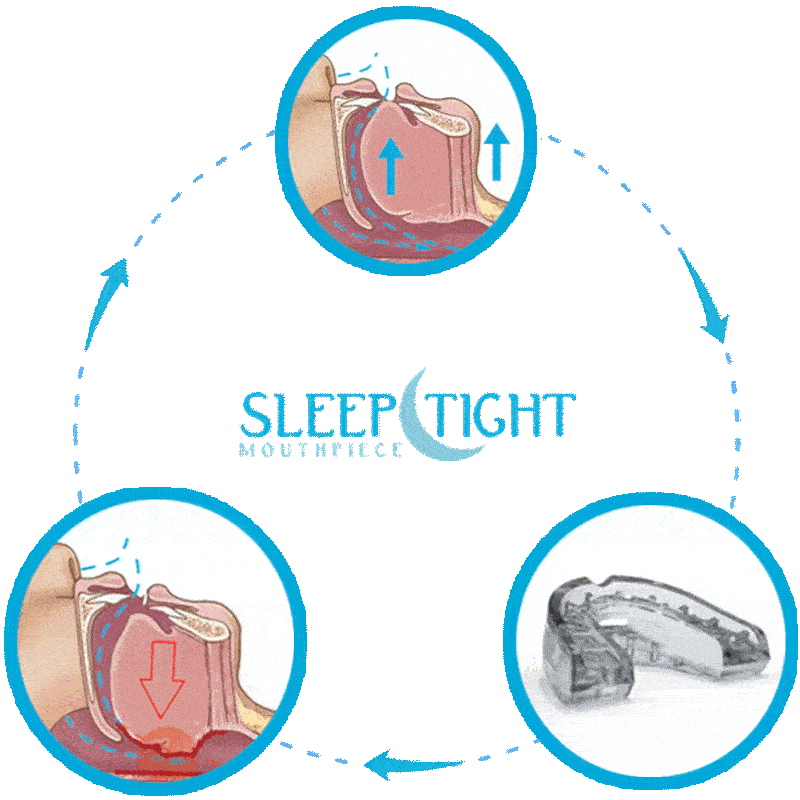Have you ever woken up from a dream and wondered what it meant? Dreams have always been a fascinating aspect of human life. They can be intriguing, confusing, and sometimes even terrifying. But why do we dream, and what do our dreams actually mean? In this article, we’ll explore the world of dreams and uncover the mysteries behind them.
Dreams have been a topic of interest and speculation for centuries. While psychologists and scientists have made progress in understanding the purpose of dreams, there is still much we don’t know. One theory suggests that dreams serve as a way for our subconscious mind to process and organize information from our daily experiences. It’s like our brain is doing some spring cleaning, sorting through thoughts, emotions, and memories, and making sense of them while we sleep. Another belief is that dreams may help us solve problems or make connections that may not be readily apparent in our waking life. These theories and more will be explored in detail in this article, so keep reading to uncover the fascinating world of dreams and discover what your dreams might be telling you.

Understanding the Basic Concept of Dreams
Defining Dreams
Dreams are a phenomenon that occurs during sleep, and they often involve a series of experiences, emotions, and sensations that are vivid and realistic. They can range from pleasant and exciting to confusing or even frightening. Dreams can be difficult to define as they are subjective and vary greatly from person to person. However, they are universally experienced by almost everyone.
The Different Types of Dreams
Dreams can be classified into several types, each with its own characteristics. These types include:
- Daydreams: These dreams occur during wakefulness and are often triggered by the imagination or thought processes.
- Lucid Dreams: In this type of dream, the dreamer becomes aware that they are dreaming and may have partial or complete control over the dream.
- Nightmares: Nightmares are intense and disturbing dreams that can cause fear, anxiety, or unease. They often involve dangerous or threatening situations.
- Recurring Dreams: These dreams occur repeatedly and often involve similar themes or situations. They can be a result of unresolved issues or emotions.
- Prophetic Dreams: Some individuals believe that dreams can offer glimpses into the future or provide insights into upcoming events.
- Precognitive Dreams: Similar to prophetic dreams, precognitive dreams involve dreaming about future events that later come true.
- Symbolic Dreams: Symbolic dreams are filled with metaphors and symbols that represent deeper meanings and emotions.
Theories about the Purpose of Dreams
Psychoanalytic Theory
One of the most well-known theories about dreams is Sigmund Freud’s psychoanalytic theory. According to Freud, dreams are a manifestation of unconscious desires, thoughts, and conflicts that are repressed in waking life. He believed that dreams served as a way for the mind to process and express these hidden desires and emotions.
Activation-Synthesis Theory
Another widely accepted theory is the activation-synthesis theory proposed by J. Allan Hobson and Robert McCarley. According to this theory, dreams are simply the brain’s attempt to make sense of random neural activity that occurs during sleep. The brain synthesizes these random signals and creates a narrative or story, which is experienced as a dream.
Evolved Threat-Rehearsal Theory
This theory suggests that dreaming serves an evolutionary purpose of preparing individuals for potential threats and dangers they may encounter in their waking lives. The dream state allows the brain to rehearse and practice responses to these potential threats, therefore increasing the chances of survival.
Neurocognitive Theory
The neurocognitive theory suggests that dreams are a product of the brain’s normal cognitive processing. Dreams are believed to be a result of the brain’s attempts to organize and make sense of the information and experiences accumulated during the day.
The Significance of Dream Content
Interpreting Dream Symbols
Dream symbols can hold different meanings for different individuals based on their personal experiences, cultural backgrounds, and emotions. Common dream symbols include animals, objects, places, and people. For example, dreaming of a snake may represent a hidden threat or fear, while dreaming of water could symbolize emotions or purification.
The Role of Personal Experiences
Dreams often incorporate elements from a person’s daily life, including people, places, and events. Personal experiences can influence dream content, as the brain may draw on recent or significant memories when constructing dreams. This connection between daily experiences and dream content can provide insight into unresolved issues or emotions that need to be addressed.
The Influence of Emotions in Dreams
Emotions play a crucial role in dreams, and they can greatly impact the overall tone and mood of the dream. Dreams can evoke a wide range of emotions, including joy, fear, anger, sadness, and confusion. These emotions can be a reflection of a person’s current state of mind or may be an attempt by the brain to process and resolve emotional experiences.

Common Dream Themes and Meanings
Flying Dreams
Flying dreams are often associated with feelings of freedom, empowerment, and overcoming obstacles. They can represent a sense of personal growth, ambition, or a desire to escape from constraints in one’s waking life.
Falling Dreams
Falling dreams can evoke a sense of vulnerability, fear, or loss of control. They may symbolize insecurities, anxieties, or a fear of failure. Falling dreams often occur during periods of stress or uncertainty.
Naked Dreams
Dreams of being naked in public can be a reflection of vulnerability, fear of judgment, or a lack of self-confidence. They may signify a fear of exposure or feelings of being unprepared for a particular situation.
Teeth Falling Out Dreams
Dreams about teeth falling out are quite common and can represent a variety of meanings. They may indicate a fear of aging, a lack of control, or concerns about one’s physical appearance. These dreams can also symbolize communication issues or feelings of powerlessness.
Exam Dreams
Exam dreams typically occur during periods of stress or intense preparation. These dreams often reflect fears of failure, a lack of confidence, or feelings of being unprepared. They can also represent a need for validation and success.
Death Dreams
Dreams about death can evoke strong emotions and are often associated with fear and anxiety. However, these dreams do not necessarily predict actual death. Instead, they may symbolize change, transformation, or the end of a particular phase in one’s life.
The Psychological and Emotional Impact of Dreams
Psychological Effects of Dreams
Dreams can have a profound impact on a person’s psychological well-being. They can provide insight into unresolved emotions, fears, desires, or conflicts that may be affecting one’s waking life. Dreams can also serve as a form of therapy, allowing individuals to process and understand difficult experiences or emotions.
Emotional Effects of Dreams
Dreams can evoke a range of emotions, including fear, joy, sadness, anger, and excitement. These emotions can linger upon waking, influencing a person’s mood and overall emotional state. Dreams may also trigger emotional healing or catharsis by allowing individuals to experience and release intense feelings in a safe and controlled environment.
Dreams and the Mind-Body Connection
Health Implications of Dreams
Studies have shown that dreams can have a significant impact on physical health. Chronic nightmares, for example, have been associated with increased levels of stress, anxiety, and even cardiovascular problems. On the other hand, positive dreams and those that evoke positive emotions can contribute to overall well-being and improved physical health.
Dreams and Memory Consolidation
Dreams are believed to play a role in memory consolidation, a process by which the brain strengthens and stabilizes memories. During sleep, the brain selectively processes and organizes information, transferring it from short-term memory to long-term memory. Dreams may provide a context for integrating new information with existing knowledge, enhancing learning and memory retention.
Dreams and Emotional Processing
Dreams can serve as a means of emotional processing, allowing individuals to work through and resolve emotional events or traumas. Dreams provide a safe space to explore and confront difficult emotions, helping individuals come to terms with their feelings and experiences.
Lucid Dreaming: Controlling and Manipulating Dreams
What is Lucid Dreaming?
Lucid dreaming refers to the state of awareness during a dream, where the dreamer becomes conscious that they are dreaming. In this state, individuals may have the ability to control or manipulate the dream environment, actions, and outcomes. Lucid dreaming offers a unique opportunity to explore and interact with the dream world.
Techniques for Inducing Lucid Dreams
Several techniques can be used to increase the likelihood of experiencing lucid dreams. These techniques include reality checks, keeping a dream journal, practicing meditation and visualization, and using specific induction techniques such as the Mnemonic Induction of Lucid Dreams (MILD) or the Wake-Back-to-Bed (WBTB) method.
Benefits and Applications of Lucid Dreaming
Lucid dreaming has many potential benefits and applications. It can be used for creative problem-solving, personal growth and self-discovery, overcoming fears and phobias, practicing skills or improving abilities, and even for recreational purposes. Lucid dreaming can provide a sense of empowerment and control over one’s dreams and subconscious mind.
Nightmares: Causes, Effects, and Coping Strategies
Understanding Nightmares
Nightmares are intense, distressing dreams that can cause fear, anxiety, and a sense of danger. They often involve vivid and disturbing images, scenarios, or situations. Nightmares can be triggered by various factors, including stress, trauma, anxiety disorders, medication, or sleep disorders.
The Impact of Nightmares on Mental Health
Frequent nightmares can have a significant impact on mental health. They can lead to sleep disturbances, increased anxiety, depression, and a reduced quality of life. Nightmares can also be a symptom of an underlying mental health condition, such as post-traumatic stress disorder (PTSD) or anxiety disorders.
Coping Strategies for Nightmares
There are several coping strategies that can help individuals deal with nightmares. These strategies include creating a relaxing bedtime routine, practicing relaxation techniques, such as deep breathing or meditation, avoiding triggers such as scary movies or heavy meals before bed, and seeking professional help if nightmares become frequent or significantly affect daily life.
Psychological Disorders and Dreams
Post-Traumatic Stress Disorder (PTSD)
Individuals with PTSD often experience vivid and distressing nightmares related to their traumatic experiences. These nightmares can contribute to sleep disturbances, increased anxiety, and ongoing emotional distress. Treatment for PTSD often includes therapies aimed at reducing nightmares and improving sleep quality.
Depression and Dreams
Depression can affect a person’s dream patterns and content. Depressed individuals may experience more frequent dreams that are negative, sad, or lacking in color and vividness. These dreams often reflect the emotional state of the individual and may contribute to feelings of hopelessness or despair.
Sleep Disorders and Dreaming
Sleep disorders, such as insomnia or sleep apnea, can disrupt the sleep cycle and affect dream patterns. Sleep deprivation can lead to an increase in dream intensity and frequency. Disorders that disrupt the rapid eye movement (REM) stage of sleep, where most dreaming occurs, can also alter dream content.
Conclusion
Dreams continue to captivate and intrigue scientists, psychologists, and individuals alike. While the exact purpose and meaning of dreams remain open to interpretation, they undeniably play a significant role in our lives. Dreams provide a window into the subconscious mind, offering insight into our emotions, desires, fears, and conflicts. By exploring and understanding the complexities of dreams, we can gain valuable self-knowledge and enhance our well-being. So next time you drift off to sleep, remember to embrace the mystery of your dreams and the profound impact they can have on your waking life.



